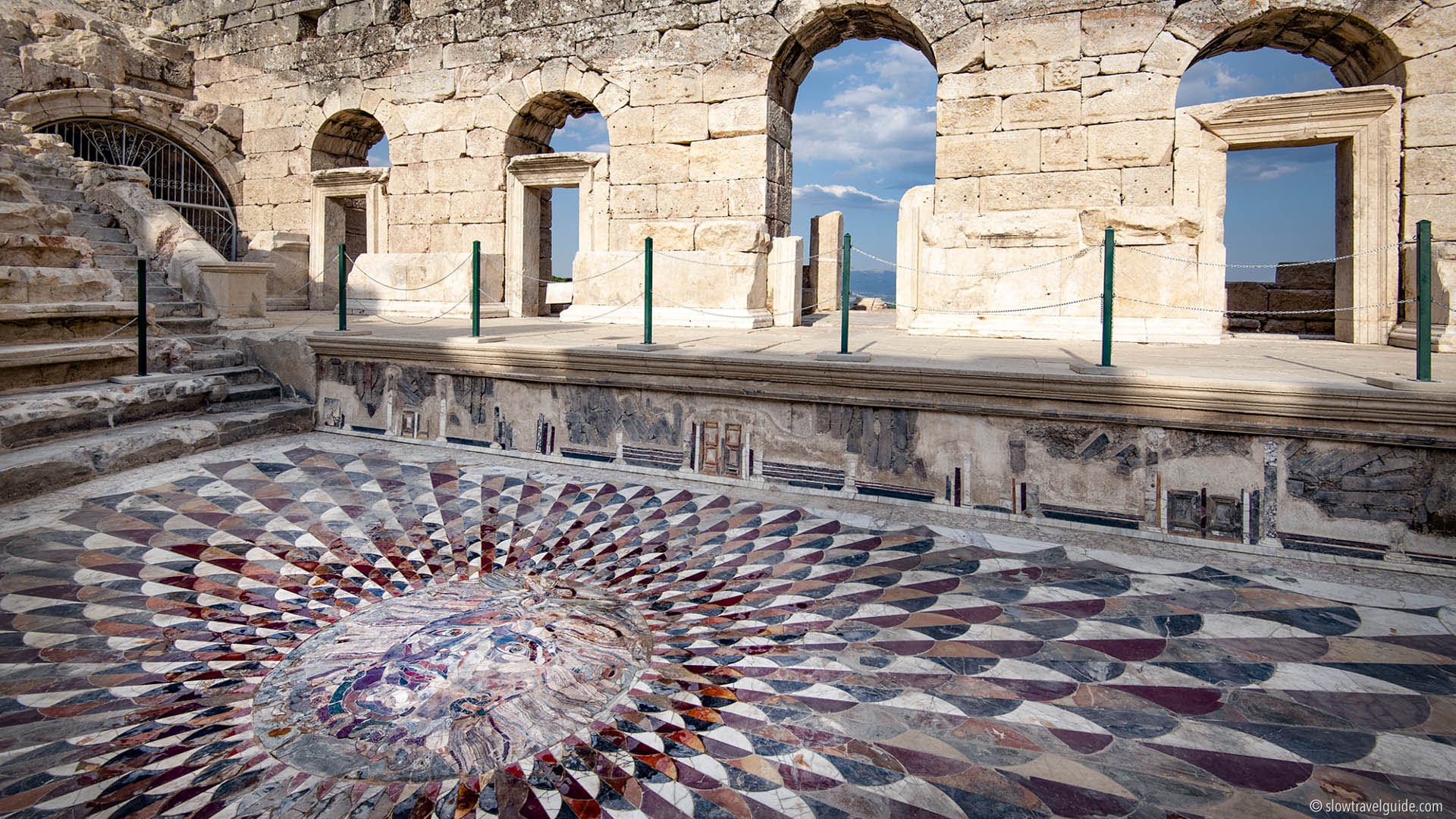Kibyra or Cibyra, also known as the “city of gladiators,” is an ancient city and an archaeological site in southwest Türkiye near the modern town of Gölhisar, in Burdur Province. It was founded by the Iron Age kingdom of Lydia in the 1st millennium BC.
The surroundings of the city was located on the crossroads of Phrygian, Carian, Lycian and Pisidian cultures and of commercial routes running east-west and north-south directions.
Although the meaning of Kibyra is unknown, it is believed to have Luwian roots because that language was widely spoken in western and southwestern Anatolia in the Late Bronze Age before being modified into its current form by the Hellenic tongue. The region’s name, Kibyratis, is a reflection of its political power. According to Herodotus, the area was known as Kabalia in the past.
It was the chief city of a district Cibyratis. Strabo says, that the Cibyratae are called descendants of the Lydians, of those who once occupied the Cabalis, but afterward of the neighboring Pisidians, who settled here, and removed the town to another position in a strong place, which was about 100 stadia in circuit.
The city center of Kibyra is on three dominant hills separated by small halves. The hills are the conglomerate of small pebbles that have merged over time and are therefore partly eroded. It is seen that public, civil and religious structures are organized in such a way as to form a certain integrity on this area.

The main factor defining the form of the settlement is the earthquakes. Among the earthquakes mentioned in ancient sources, two of them—one in 23 A.D. and the other in 417 A.D.—are significant. The Classical and Hellenistic early city was largely destroyed by the former, but it was rebuilt under Roman architectural guidance.
In 2006, archaeological excavations revealed the city’s militaristic character, with over 30,000 infantry and more than 2,000 cavalry units. Kibyra is also home to the largest gladiator reliefs from ancient times in Turkey.

Thanks to its strategic location, Kibyra served as a regional center for justice, and its reputation as a town known for breeding fast-running horses earned it the nickname “The City of Fast-Running Horses.” The city flourished during the Roman period, and all the architectural remnants visible today belong to that era.
Kaesarea Kibyra contains rare examples of Roman and Byzantine architecture, including a 9,000-seat stadium and a functional odeon with an orchestra section covered by a unique Medusa mosaic. The mosaic Medusa, made of marble and dating back to the 1st century, depicts the mythical creature Medusa. The middle of the odeon has been decorated with Medusa’s multi-colored head using a technique called “Opus Sectile.”

One of the most magnificent structures in Kibyra is the stadium, which is considered one of the top five stadiums of its kind with a 200-meter track and a seating capacity of 12,000 people. Originally intended for sporting events, the arena was later modified to host gladiator battles.
Another notable structure in Kaesarea Kibyra is the ancient theater, which can accommodate 7-8,000 spectators. Its vertical design and proximity to the stage make it a remarkable example of ancient theater design. The original seating arrangement remains fully intact and can be viewed today.
In the ancient city of Kibyra, there is a remarkable structure known as the Odeon. It was used as a concert hall for musical and theatrical performances and could hold up to 3,500 spectators, making it the largest known odeon in the world.
The bath, which is considered to have a history of at least 1800 years, is another significant structure in Kibyra. With a total area of 5,400 square meters and a main structure covering 2,600 square meters, it is the city’s third-largest building after the stadium and odeon. The heating system was designed to heat the marbles from the bottom, making it the largest Anatolian bath in terms of area covered.
Kibyra Ancient City is on the UNESCO World Heritage tentative list.




